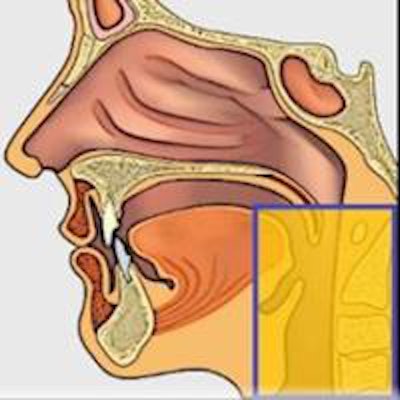
A researcher from France has developed five mobile applications that are available for free on Google Play and are designed for use in daily practice to provide efficiency gains for radiologists and improve the accuracy of reports. Details were presented at ECR 2015 and the apps have already been downloaded over 8,000 times.
Mobile applications are useful and simple tools that can work as an "ectopic brain" for radiologists and can promote and facilitate the use of scientific guidelines, according to Dr. Louis Lassalle from Paris. In an e-poster at the Vienna congress, he outlined the following five apps he developed for Android smartphones that provide easy and immediate access to precise, up-to-date information:
Pulmonary Nodule Fleischner app: This application provides recommendations for the follow-up management of pulmonary nodules of incidental finding on thoracic CT scans based on the Fleischner Society guidelines. This international, multidisciplinary, medical society for thoracic radiology is dedicated to the diagnosis and treatment of diseases of the chest.
RECIST 1.1 Calculator: Since 2000, an international committee has developed unified, easily applicable criteria for measuring tumor response using x-ray, CT, and MRI, and they are known as Response Evaluation Criteria in Solid Tumors (RECIST). This application allows evaluation of solid tumor response to chemotherapy according to RECIST 1.1 guidelines.
Renal Mass - Bosniak app: This application allows classification of cystic renal masses according to the Bosniak classification system and provides management recommendations for renal solid and cystic masses.
PI-RADS Prostate MRI app: This application allows scoring for risk stratification of lesions on multiparametric prostate MRI using the Prostate Imaging Reporting and Data System (PI-RADS). PI-RADS was developed by the European Society of Urogenital Radiology (ESUR).
Head and Neck TNM Calculator: This application allows staging for head and neck cancers according to the 7th Union for International Cancer Control (UICC) TNM guidelines, with stage calculation and lymph node anatomy.
Smartphones and tablets have developed considerably over the past decade, and a growing number of them now use the Android operating system. Furthermore, the daily practice of radiology is based on a growing amount of information (scoring systems, classifications, etc.), yet access to and accurate recall of this information can be difficult, making good apps of great value, noted Lassalle, a resident currently working at the neuroradiology department in Hopital Sainte-Anne. He started developing apps in 2012.
Pulmonary Nodule Fleischner app
 Screen capture of the Pulmonary Nodule Fleischner app.
Screen capture of the Pulmonary Nodule Fleischner app.The Fleischner Society's management recommendations for small pulmonary nodules of incidental findings on thoracic CT were published in 2005 (solid nodules) and 2013 (subsolid: part solid and ground glass nodules). However, studies have reported an underuse of these recommendations, resulting in inadequate follow-up of patients, potentially leading to increased morbidity (lung cancer underdiagnosis) and costs (unnecessary follow-up procedures), according to Lassalle, who is now working on a new smartphone app for thyroid ultrasound reporting using a standardized reporting system (TI-RADS).
The main screen of the Pulmonary Nodule Fleischner app displays schematic representations of all nodule categories (solid, part solid, ground glass, multiple subsolid). By selecting a nodule type, the user can access the specific management recommendations according to the size (all nodules), clinical context (solid nodules), and in case of persistence at three months (subsolid nodules). Additional commentaries are provided about the usefulness of other imaging modalities, such FDG-PET/CT, Lassalle added. The main screen also provides PubMed links to the articles and a link to the conditions required for the application of these recommendations. Click here to download.
RECIST 1.1 Calculator
 Screen capture from the RECIST 1.1 Calculator.
Screen capture from the RECIST 1.1 Calculator.In 2009, a revised version of RECIST 1.1 was developed to address limitations of previous response evaluation systems. Precise application of RECIST 1.1 criteria allows a standardized oncologic response monitoring, but inaccurate application of these criteria may lead to misinterpretation of the patient response, having a negative impact on patient care, Lassalle emphasized.
A RECIST 1.1 Calculator allows the user to evaluate the patient's response by providing the diameter of each target lesion (1 to 5 targets), according to its nature for both a current and reference study. The user also describes the evolution of nontarget lesions and the appearance or not of a new lesion.
The app then displays the sum of diameters for current and reference studies, with variation percentage and overall response status for the evaluation by RECIST 1.1. Click here to download.
 Screen capture of the Renal Mass - Bosniak app.
Screen capture of the Renal Mass - Bosniak app.Renal Mass - Bosniak app
The incidental finding of a small, undetermined, renal mass is a current issue in daily practice, and imaging classification systems, leading to management recommendations, have been published for cystic masses (based on the Bosniak classification) and for solid masses.
With the Renal Mass - Bosniak app, the user describes the radiologic features of the cystic lesion according to the Bosniak classification (density, wall, septa, calcifications, solid component), Lassalle wrote. The app then displays a schematic representation of the described lesion, with its Bosniak category, and management options according to the clinical context. To download, click here.
PI-RADS Prostate MRI app
ESUR guidelines for multiparametric prostate MRI were published in 2012, and they include a PI-RADS classification for structured reporting, aimed at improving the accuracy and reproducibility of radiologists' reports, as well as communication with referring physicians. This standardized approach to report prostate MRI is also needed to conduct diagnostic studies and meta-analysis, but lesion scoring requires formation and can be time-consuming, Lassalle stated.
 Screen capture of the PI-RADS app.
Screen capture of the PI-RADS app.The main screen of the PI-RADS app features the 27 regions and a standardized prostate reporting diagram with axial sections of the prostate base, midgland, apex, and extraprostatic involvement, allowing precise localization of the lesion in the peripheric, transitional, or extraprostatic (bladder, seminal vesicles, distal sphincter, or extracapsular involvment) zone by direct finger touch.
After completing all parameters, the overall PI-RADS score of the lesion is given and also the associated probability of clinically significant malignancy, using the five-point scale from the ESUR guidelines. This overall PI-RADS score is not obtained by summing individual scores, but with T2 as the predominant parameter in the transitional zone and diffusion as the predominant parameter in the peripheral zone.
A new PI-RADS is being developed, and the application will be updated once this version has been published, according to Lassalle. Click here to download.
 Screen capture of the Head and Neck TNM Calculator.
Screen capture of the Head and Neck TNM Calculator.Head and Neck TNM Calculator
The 7th edition of the TNM (tumor, node, metastasis) classification for staging head and neck malignancies was published in 2009, thus determining appropriate treatment and prognosis, and improving communication between oncologists and radiologists. It is also needed to perform clinical trials and epidemiological studies, Lassalle explained.
With the Head and Neck TNM Calculator, the user selects the tumor localization by direct finger touch on one of the three areas (nasal cavity and sinuses, oral cavity, hypopharynx and larynx), and then gives the exact location of the tumor within the selected area. The extent of the primary tumor (T), as well as pathologic lymph nodes (N) and metastasis (M), is then described according to the location selected. The app displays the stage of the disease. To download, click here.
Click here to read the full e-poster.




















